Birzh, Lithuania

Jonathan and Renée Dorfan’s Visit to Lithuania
26-29 June 2005
(Written in the fall of 2005: reformatted in the fall of 2015)
Background: Why and Where?
The earliest records of the Dorfan family date back to approximately 1735 with the birth of Yoel (Joel, Yovel) Dorfan in Birzai, Lithuania. Birzai is known as Birzh in Yiddish. Most known living descendents can be traced back to the Dorfan antecedents in Birzai. While there is sometimes confusion, the Dorfan family is distinct from the Dorfman family.
The main Dorfan emigration from Lithuania took place in the 1890’s and early 1900’s, primarily to South Africa and America, with a much smaller number going to Palestine and Belarus. There were some surname changes during that period; Several Dorfans changed their name to Adelstein before leaving Lithuania, some of whom went to America and some of whom went to South Africa. Another branch of the family emigrated to America where their name changed to Gorfine.
There remain a large number of Dorfan descendants in South Africa. Likewise in America, both from the original migration and also from more recent migrations (last 40 years) from South Africa, Belarus and Ukraine. There is also a group of Dorfan descendents in Israel, mostly from post-1960 emigration from South Africa.
It is hard to trace those Dorfans that did not emigrate before the first world war. It seems that connections between the families that emigrated and those that stayed behind were either sparse or our generation was never told about them. It is likely that some went east into Russia during and after the first-world war. Those that remained in Lithuania until the second-world war were massacred in Lithuania, almost entirely in the last six months of 1941. It is impossible to tell how many perished at that time, but there are many records of such deaths.
As one would expect, the Birzai Dorfans married into the Jewish communities of the towns that surrounded Birzai. It often happened that the groom left his hometown to live in the hometown of his bride. Thus starting in the mid 1800’s, Dorfan families started to show up in the birth, death and taxation records of the towns such as Pasvalys, Vaskai (then called Konstantinova), Vabalninkas, towns which are 10- 20 miles from Birzai.
We were fortunate to have a terrific guide for our trip, Regina Kopilevich. Regina is Jewish, was born in Belarus and now resides in Vilnius. Besides Russian and Lithuanian, she speaks excellent English and Hebrew. She is knowledgeable about the history of the Lithuanian Jews, about the individual shtetls and is very willing to do personalized, pre-research to augment a visit.
Photographs, with captions, of many of the sights mentioned accompany this account. All the towns mentioned in the write-up can be found on the map below except Vaskai. Vaskai is about 10Km due north-east of Pasvalys.

The Trip; First stop Birzai. June 26th
We landed at Riga airport lunchtime June 26, 2005 and rented a car. It is an easy 45 minute drive on A7, via Bauska, to the Lithuanian border. From there we traveled due south for about 20 minutes and east for a further 20 minutes to Birzai.

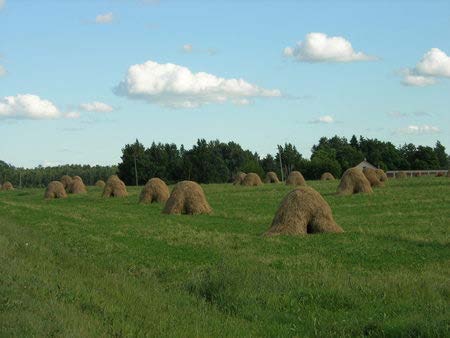
On the road from Riga to Birzai.

Approaching Birzai.
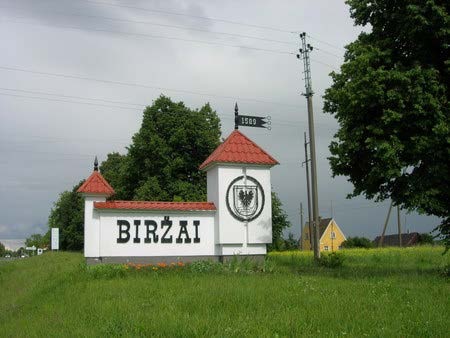
Success!
We checked into the Tyla Hotel, which is very pleasant (http://www.tyla.lt/hotel/). We had a spacious suite. The hotel has a restaurant and the proprietor spoke English. The cost was very reasonable and included breakfast.
Since it was still light and warm, we ventured into the main town. We drove around for a while and found several restaurants. Finally we settled on what we later found out to be the town’s best restaurant, Agaros, where we had a meat meal. After dinner we explored the town. We managed to find the old Jewish cemetery, but the mosquitoes drove us off. We stopped at a supermarket where we were, with Renée’s persistence and hand-signaling skills, able to find and purchase mosquito repellent.
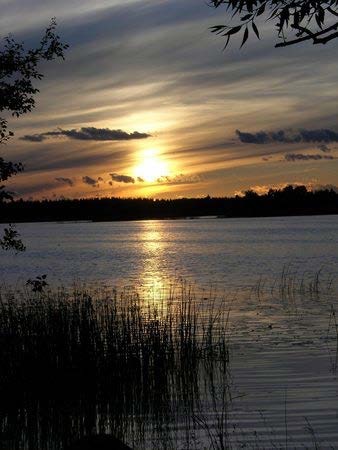
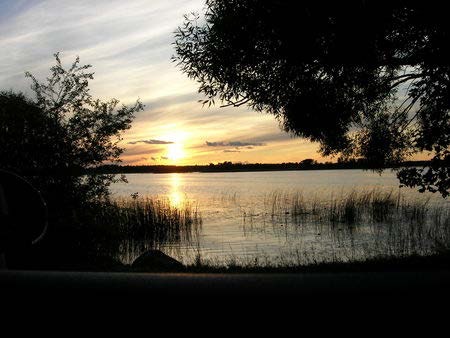
Sunset over Birzai’s large (man-made) lake, Lake Servina, was beautiful.
Birzai. June 27th
Our guide, Regina, met us at about 10am. She was accompanied by her driver and a Cape Town couple, Joy and Arnold Swiel, who were interested in seeing the same towns as we were. Since Renée and I are ex-Cape Townians, it was fun to hook up with Joy and Arnold.
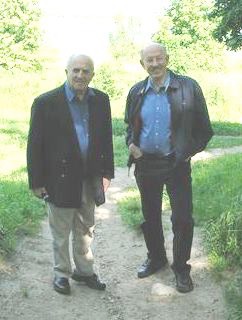
Arnold and Jonathan

Joy and Renée outside the castle manor
We began our day visiting Count Radzivil’s castle which lies on the edge of Lake Servina.....and then on to the neighboring museum of Birzai. We took a road out of the town and went to Count Tishkevitch’s castle on the other side of the Lake. The princely families of Radzivals and Tishkevitches were major rivals. While at the Tishkevitch estate, Regina stopped an elderly man pushing a bicycle and engaged him in conversation. He was about 80 years old, and hence he remembers back to the late 30’s and early 40’s. He recounted the story (with Regina translating) of how the Nazi’s occupied Birzai and how the Jews were massacred.

The entrance to Lord Radzivil’s castle.
From there we went to have lunch with the one Birzai-born Jew who both survived the holocaust and returned to Birzai. His name is Mr. Melamed and he is 80 years young. Regina translated for us from Lithuanian. Arnold spoke with Mr. Melamed in Yiddish. Mr. Melamed was 15
when the Nazis stormed into Birzai in June1941. He and several other young men were able to escape using one of their parent’s cars. He ended up in Russia where he signed on with the army. After the war ended, he returned to Birzai, married and has lived there ever since. He has a married daughter who also lives in Birzai in one of the few modern homes n the town. He has
no recall of the Dorfan or Swiel families (there were about 3000 Jews and 3000 non-Jews living in Birzai in 1941).
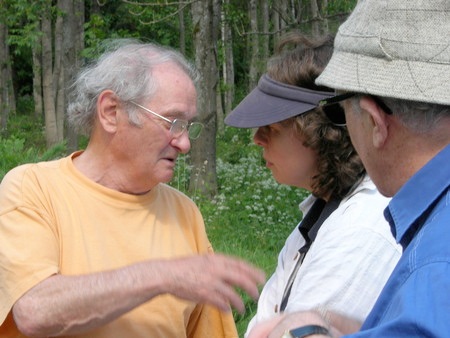
Mr. Melamed speaking with Regina and Arnold
After lunch we drove through what was the Jewish part of Birzai. Mr. Melamed was able to show us the buildings (or sites) of former important Jewish landmarks. There were four shuls – the Big Beit Midrash, a once Kariate shul (which later became a Chasidic shul), the Beit Midrash of the Shmashim, and a shoemaker’s shul.
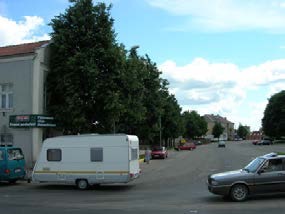
Birzai’s main street.

This was once a shul.
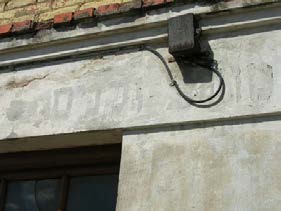
Only evidence for the Jewish neighborhood: home for the aged.
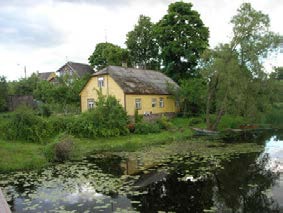
Looking across the Aparcia river from the Jewish area.

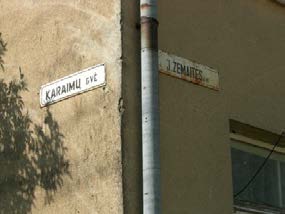
Former Jewish neighborhood in Birzai.
We then drove 3.5 Km outside of Birzai to the Astrava forest where there is a memorial to the 2400 Jews that are buried nearby in three mass graves. Standing in the forest, knowing that so many Jews (amongst them many Dorfan descendants) died on that fateful, horrific day was numbing, eerie and heart-wrenching. The account of that day and the days leading up to it, taken from JewishGen, is given as the Appendix to this report.

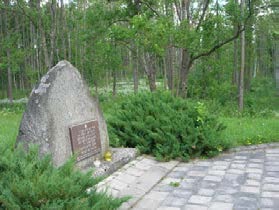
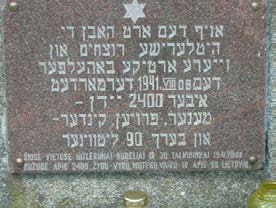
Astrava Forest: Memorial to the 2400 Jews that are buried nearby in three mass graves. The inscription reads: “In this place the Hitlerist murderers and their local helpers on 8.8.41 murdered more than2400 Jews – men, women and children and 90 Lithuanians.”
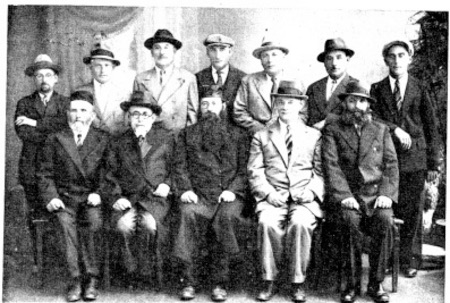
Birzai Jewish elders circa 1928. Rabbi Yehudah-Leib Bernshtein sits in middle of the first row.
To his right is Mendel Dorfan, who along with many of his family, were among those killed. Mendel Was elected in 1919 to the first Birzai Board of Governors.
Our final destination on June 27th was the Jewish cemetery in Birzai. Our initial response was one of distress at the terrible neglect and disrepair of the cemetery. The grass (brush) is very tall and obscures many of the gravestones, some totally. However, as Regina kept telling us, the Birzai cemetery is one of the largest and most intact (i.e. largely not desecrated) in Lithuania. As one enters the cemetery, there is a memorial to the 30 Jews murdered in the early days of the Nazi occupation. There are about 400 graves1 most of which have headstones standing. There are a few graves where the stones have obviously been pillaged and there are quite a lot of headstones that lie fallen to the ground. The cemetery appears to be laid out according to the different communities......there is a Karaite area, etc. Some areas are gender mixed, others are gender separated. The inscriptions are in general not easy to read; however Regina is very experienced with reading headstones and there were few that she could not fathom. Regina and Jonathan spent about two hours systematically mapping out part of the southern part of the cemetery, about 100 headstones. There are very few gravestones that include family names.
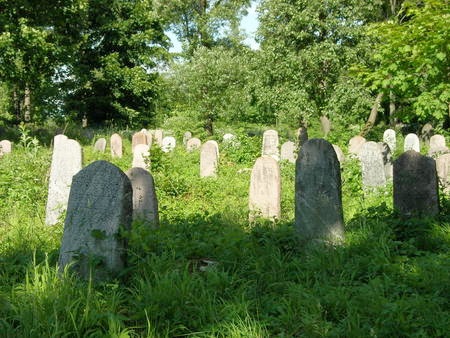
Jewish cemetery, Birzai.
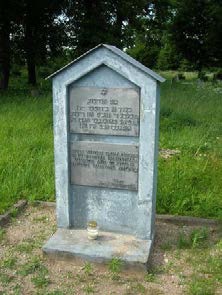
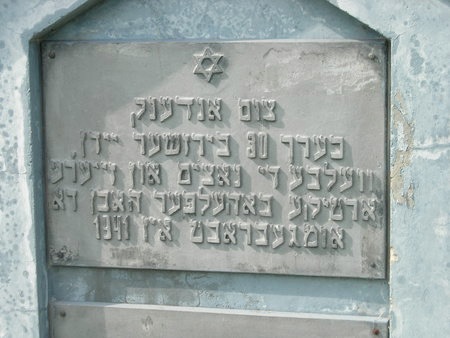
Memorial to the 30 prominent Jews murdered in the first days of the Nazi Occupation.
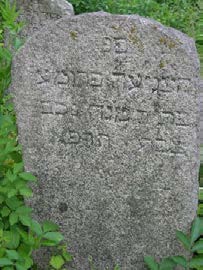

Stones from the Birzai cemetery.
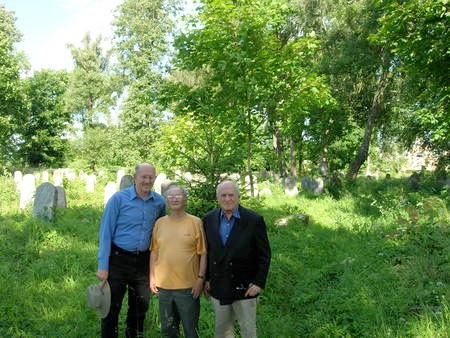
Jonathan, Mr. Melamed and Arnold.
Neighboring towns of Vabalninkas, Paneveyzh, Pasvalys and Vaskai: June 28th
We went exploring neighboring towns with Regina and the Swiels, towns that the Dorfan family had married into and then lived there. We started in Vabalninkas, where we visited the former site/building which was the shul. From there we drove to the town of Paneveyzh. Jonathan’s paternal grandmother (Ella), her brother (Lazarre) and their parents (family name Smith) came from Paneveyzh. Ella’s mother’s family, Navias (Navihatsky), were also from Paneveyzh. Paneveyzh was a major center of Jewish life and especially Jewish learning. We drove around the largish town, with Regina pointing out various sites around the city. As with most of the Lithuanian towns, there is little preserved or memorialized to remember the Jews. We visited the site of a famous shul, a factory district that was run by Jews, a yeshiva with a plaque calling out the years it was open. The very large Jewish cemetery was totally desecrated and serves the town as a park. There is a commemorative plaque reminding people of its former function.
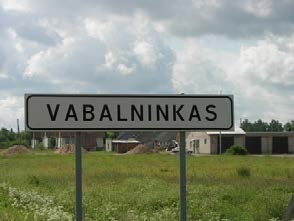
Vabalninkas:

Joy and Renée outside the building which was once the shul.
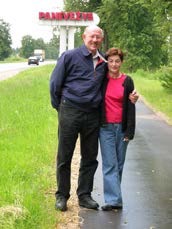
Arrival in Paneveyzh.
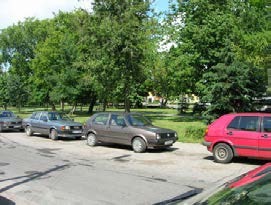

Site of the former Jewish cemetery: commemorative plaque.
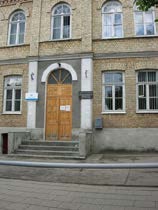
Paneveyzh: Former Yeshiva.

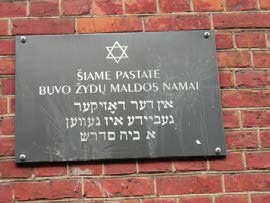
Commemorative plaques for a Yeshiva that operated from 1918-1940.

Site of the Paneveyzh Jewish ghetto of 1941.
We had a light lunch and the Swiel’s departed for Riga with Regina’s driver. Regina, Renée and Jonathan proceeded to Pasvalys (Posvol) and Vaskai.
The Jewish cemeteries in both of these small towns have very few remaining graves, about 20-30 headstones each, some of which are fallen. Each site has a commemorative stone and plaque and, unlike in Birzai, both areas are neat and well maintained (by whom we do not know). In Pasvalys, we visited the building which was formerly the shul.

Arrival at Pasvalys
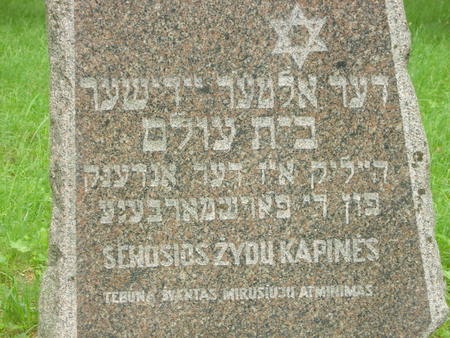
Memorial plaque at the site of the cemetery.
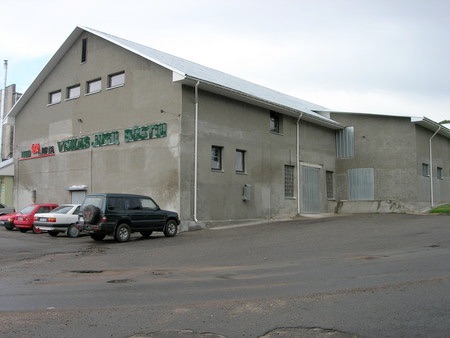
This building was once the shul.
Amongst the records Jonathan had obtained from the Lithuanian Archive is a record of the Itzek and Chana Dorfan family living on Gruzhanskaya Street in Konstantinova (now Vaskai). This street would have pointed in the direction of Gruzhans. So we found a candidate street, which as Regina had expected, has since changed its name. It is now called Vilniaus Street. We stopped along the street to admire a beautiful old windmill (the mill of Baron Hass) that appears now to be used as a restaurant. Regina stopped a passing lady to enquire about a man she had been informed was the Vaskai historian. She immediately disappeared into a neighboring house and emerged with an elderly gentleman with a walking stick. His name was Anilionis Petras; he was born in 1930 and was the village historian (and historian in general) and the former village physics teacher. He lived with his sister and brother at 25 Vilniaus street, Vaskai, Lithuania. Besides his native Lithuanian he speaks German. He was able to read Hebrew and Arabic. He was quite a guy! And he could tell us a lot about what life was like in the late 1930’s and the early 40’s. He knew the Dorfan family. He took us down to the corner of Vilniaus and Pasvalio streets to the holding that had belonged to Itzek and Chana Dorfan. The holding is a corner lot at 1Vilniaus street and 2 Pasvalio Street and comprises a large wooden house (now painted green), a beautiful old (historic) brick storehouse/barn, and another structure that looks like a place where animals would have been kept. The plot was about 8000 sq feet. When Anilionis was a child, the family living there were Nachman and Ida (nee Trapido) Dorfan and their children. Anilionis said that Nachman’s brother also lived with them. According to the family tree, Nachman was the youngest son of Itzek and Chana. Records show that except for Movsha, Nachman’s brothers emigrated to South Africa. So the brother staying with Nachman was likely Movsha. According to Anilionis, the Trapido family was rich and influential. Nachman and Ida Dorfan likewise were well-to-do. They had an iron and hardware shop and sold farm equipment. At the rear of the main house (see pictures) one sees the shop with double doors. The brick building was apparently used to store large equipment for sale.
Anilionis told us of other Jewish neighbors who lived on the street...names like Kacas Abelis, Schenkman who was a shoemaker (had a daughter Chana Eta in 5th grade with Anilionis), and Trapido who had a manufacturing store. Opposite the brick building at 2 Pasvalio Street was the shul. Anilionis described it in great detail, including making a sketch of the wooden building with its shingled roof. Anilionis spoke of how he played harmoniously with the Jewish children of his age. He joked that the non-Jewish children like himself were envious that the Jewish children did not have to attend school on Shabbat. There was a Jewish school with four elementary school grades. The rich families would thereafter send their children to Jewish schools in Paneveyzh, the others would go to the local non-Jewish school.
Anilionis told of the days of the occupation in mid 1941. The Jewish women and children were killed in the forest of Gruzmeskis. The older men were killed in the cemetery. The strong men were forced to work at the railways and were killed later. The shul was destroyed in 1942. There are records in the Holocaust museum of testimony from surviving relatives recording the death’s of members of the Dorfan family including Nachman, Ida and their children.
The visit to Vaskai was fascinating and very informative.
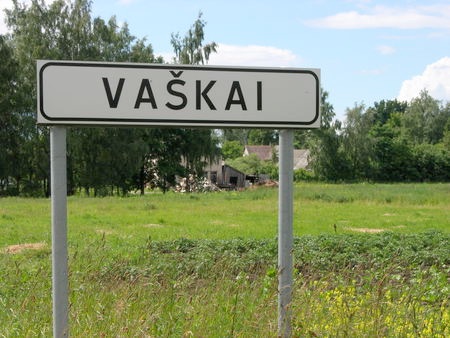
Arrival in Vaskai.

Site of the Jewish cemetery

commemorative plaque.

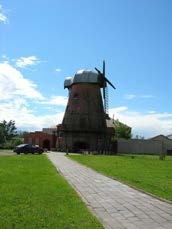
Vaskai: Church and the mill of Baron Hess.

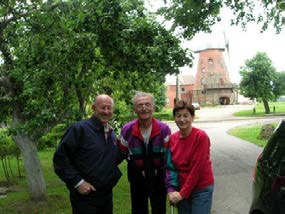
Village historian, Anilionis Petras, with Jonathan, Regina and Renée.
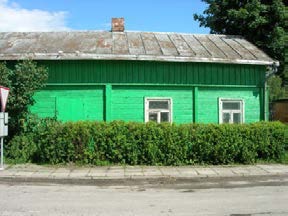
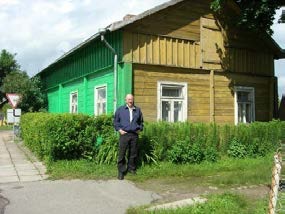

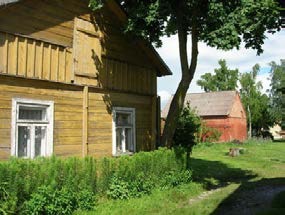

Five views of the holding at the corner of Vilniaus and Pasvalio streets in Vaskai that belonged to Itzek and Chana Dorfan.
June 29th; Departure
On the morning of June 29, we traveled back to Riga and departed for Uppsala Sweden.
Appendix: The 1941 massacre of the Birzai Jews.
The following paragraphs are taken from the Article on Birzh, Lithuania by Joseph Rosin at
http://kehilalinks.jewishgen.org/birzai/Birzh_3.html
“The German army entered Birzh on Thursday the 26th of June 1941, arriving from the north, from Latvia, and found the Lithuanian nationalists already organized, headed by a local lawyer. Persecution of the Jews began on the first day of German entry, the first victim being the doctor, Avraham-Zalman Levin2. On a pretext of being asked to visit a sick person, two Lithuanians took him out of his house and one of them shot and killed him. Motl Beder was shot trying to defend Rabbi Bernshtein, who was murdered because he dared to protect his community. The young doctor Aptakin tried to hide in a forest, but Lithuanian nationalists found and murdered him. Advocate Kirshon and his family found asylum with Lithuanians who were considered friends, but who handed the whole family over to the police to be murdered. The local "Shokhet" was tied with his beard to the tail of a horse and then towed through the streets till his death.
One month after the Germans entered Birzh, on the 26th of July 1941, all Jews were ordered to leave their houses and to move to a ghetto which had been established in several shabby alleys around the synagogue and the Beith Midrash. Jewish men continued to be arrested all the time, then taken to the Jewish cemetery and other places in the town or its vicinity, and shot.
On the 8th of August 1941 (15th of Av 5701) the final phase of the murder of Birzh Jews began. On this day men, women and children in groups of 100-200 persons were led to the Astrava forest about 3.5 km north of Birzh, about 1.5 km on the road to Paroveja. There, by the edges of the forest, two pits 20 and 30 meters in length and 2 meters wide had been prepared, having been dug previously by 500 Jewish men who were forced to do this work. The victims were ordered to remove their upper clothes and kneel near the pits, into which they were pushed and shot. Whoever still showed signs of life was shot again with a pistol. The massacre took place from 11 o'clock AM till 7 PM in the evening. A local Lithuanian "with a yellow beard" (Jonas Kairys) excelled in brutality during the massacre. The murderers divided the robbed Jewish property among themselves, only giving expensive items to the Germans, after which they returned to the town singing.”
-
1.Note added in 2015 by Jonathan Dorfan: It turns out that there are more than 1600 graves in the cemetery.
-
2.Note added by Jonathan Dorfan: Dr Avraham Levin was married to Sora Dorfan, the daughter of Mendel
Dorfan, who was an elected city official in Birzai.


